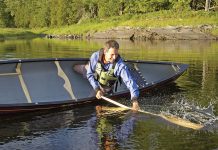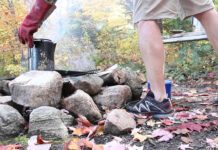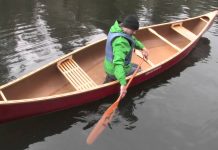Craig jiggles the handle and elbows the rickety, wood-paneled door. From my paddling buddy’s devious glance I know in a few moments we’ll be inside the cupola of the tallest, most remote lighthouse on the Great Lakes. I dig out a Swiss Army knife from my PFD pocket and with a few turns of a flat-head screwdriver, the hinges release from the rotten jamb and we step into the dark and musty Caribou Island tower.
Red-enameled stairs switchback to a trapdoor; inside the glass room at the top it’s unbearably hot. Through windows caked with desiccated insects, the watery horizon of Lake Superior stretches in all directions, our sea kayaks yellow and white slivers on the rocks below.
I justify forced entry by a sense of entitlement: My great-great-grandfather worked here for 11 years in the late 1800s. This is the climax to a six-hour open-water crossing—a nerve-wracking affair Craig and I will repeat tomorrow as we begin our 150-kilometer journey back to civilization. But I’m disappointed to realize the signs of lightkeeper C.J. Pim’s Caribou Island tenure have long crumbled away, erased by time and technology. The only tangible evidence of my ancestor’s career is the photocopy of his life insurance policy—valued at $2,000 and dated 1896—stored at home in a desk drawer.
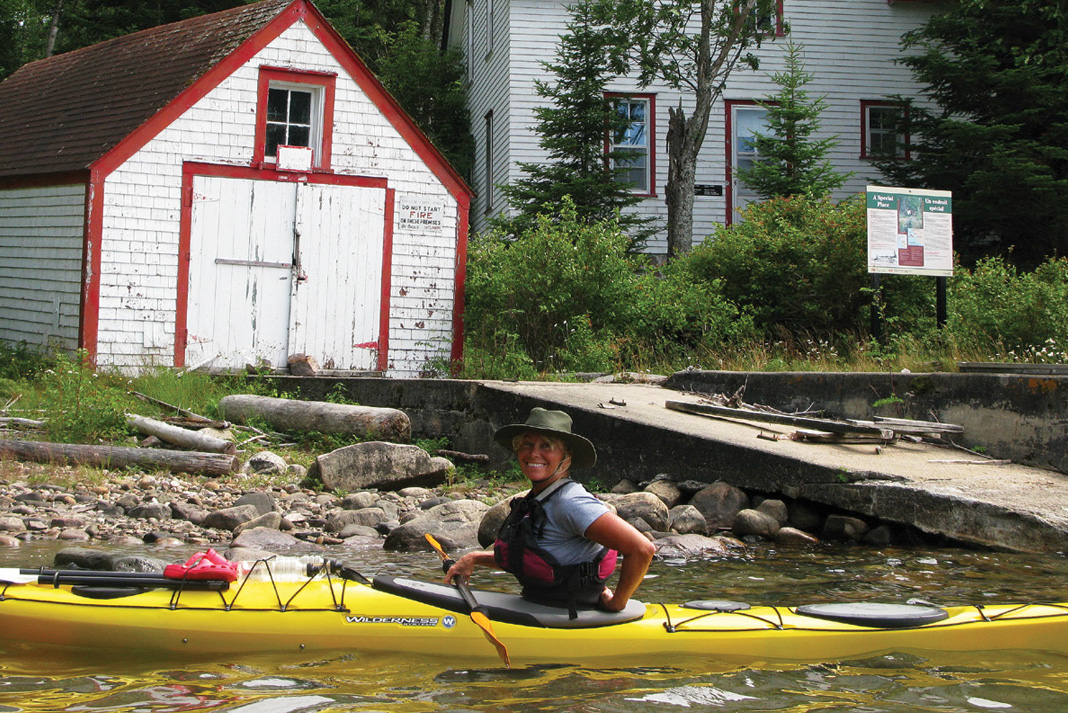
The 100-foot-tall cement structure we’ve broken into replaced Pim’s stone tower in 1911. Impressive Gothic-style flying buttresses, designed to anchor the tower in hurricane winds, symbolize the halcyon days of lightkeeping, when hardscrabble men and women and their families were integral to maritime safety—responsible for tending whale oil and kerosene lamps, operating foghorns, recording weather observations and bravely assisting mariners in distress.
A century ago, the Caribou Island lightkeeper was paid $1,260, from which he pulled a salary for an assistant. Since then, the occupation faded into obsolescence. With the advent of accurate charts, improved navigational tools and, finally, solar-electric power, the Canadian Coast Guard de-staffed the last light on Lake Superior in 1991.
Final abandonment came in 2010, when the government listed 986 lighthouses in Canada, including 12 on Lake Superior, as “surplus”—meaning they “could be replaced with simpler structures whose operation and maintenance would be more cost-effective.” Coast Guard lightkeepers still maintain beacons in a few isolated spots in the Pacific Northwest, but as the lights of Lake Superior wink toward an uncertain future, a handful of hopelessly anachronistic individuals have found their own creative approaches to reinventing this long-lost way of life.
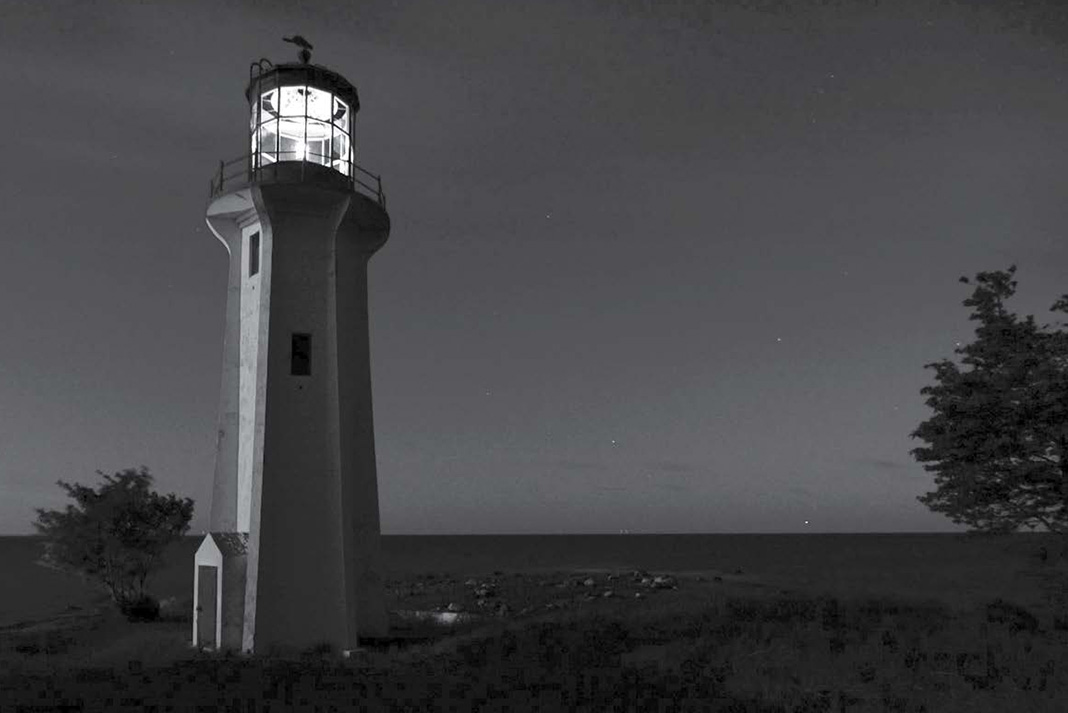
Lighthouse of doom
It could be argued that once you’ve seen one lighthouse, you’ve seen them all. But the more you visit, the more you appreciate these marvels of engineering. Towers cling to the craggy bedrock of some of the most rugged headlands on Lake Superior. Tons of concrete, rebar, two-by-fours, aluminum roofing, oil drums, asbestos insulation, lead paint and more were hauled to the middle of nowhere where the buildings were erected largely by hand. So it makes sense the government favored cookie-cutter architecture. Structures were often duplicated from place to place—the keepers’ houses at Île Parisienne, at Lake Superior’s south end, mirror those at Michipicoten Harbour on the east shore; and the light towers at Battle and Davieaux islands are twins, as are those at Otter and Slate islands.
More importantly, though, the simple argument of design ignores the human aspect of the lights. Regrettably, I don’t know much about how Pim occupied his lightkeeping days. But many stories documented from other lights tell of an unpredictable existence—from uplifting tales of quaint family life to accounts of tragedy and suffering that make your blood run cold.
The assistant keeper’s house at Otter Island is located in Old Dave’s Harbour, a crescent-shaped nook three kilometers off the Pukaskwa mainland, midway along a 200-kilometer-long stretch of wilderness. It’s a haunting place: Native Ojibwa made mysterious, prehistoric stone structures here, believed by some to align with the setting sun on the June solstice. Trees grow to the water’s edge, muffling the sound of the swell on the outer coast and creating quietude that’s unsettling after days of wind and waves. Fog flows like gauze through the narrow channels, and a few remnant woodland caribou ghost into thick bush. The atmosphere is made spookier still by the decrepit two-storey Victorian, with its peeling paint, sagging eaves and creaking floors.
“I don’t want to stay here,” says Anne, a client I’m guiding on a sea kayak trip along the Pukaskwa coast. Relaxing on the cement pier in front of the eerie house, I’ve just told the story of assistant keeper John Moore, who slipped, cracked his head and died here on a cold night in November 1930. Main keeper Gilbert MacLachlan tended his colleague’s body for two weeks, until a Coast Guard vessel arrived to transport man and corpse home at the end of the shipping season.

I assure my guest we’re safe and show her the lighthouse logbook revealing the numerous times I’ve camped here before: Windbound again… Played lightkeeper for a few days… Nice here but hoping for calm… I’ve lost count how many times I’ve made the long walk to the lighthouse on Otter’s rocky tip, desperate to pull in fragments of the weather forecast through static on the marine radio. “So you’re saying we’re going to be stuck here awhile?” she asks. I don’t bother mentioning that even in good conditions, it’s a white-knuckle paddle to the north or south along a cliff-bound shore with few landings. Heebie-jeebies aside, Otter Island is a welcome refuge on a treacherous coast.
Oftentimes, the journey to and from beacons comprised the greatest risk of the lightkeeping profession. In the 1910s, the Coast Guard issued sailboats to lightkeepers for their commute to work—a short-lived policy that proved deadly for some unlucky workers.
In December 1919, Caribou Island keeper George Johnston survived an epic eight-day escape, piloting a tiny, open-decked boat through massive waves, ice chunks and freezing spray back to the mainland. A couple of years later, when the government decided to assign a Coast Guard boat for the job, the CGS Lambton disappeared in a winter storm without a trace. Twenty-two men died, including new Caribou lightkeeper George Penefold.
Lightkeepers suffered heart attacks, starved to death, fell through the ice, and drowned in various boating accidents. Lake Superior’s first Canadian light was built on Talbot Island, a knife-edge escarpment 100 kilometers east of Thunder Bay, in 1867. It was abandoned after three Talbot keepers perished on the job in just six seasons. One drowned and another died of exposure in separate end-of-season boating mishaps. Keeper Thomas Lamphier died suddenly while overwintering. After guarding his frozen corpse for months, Lamphier’s wife was discovered the following spring in a state of madness, her once-black hair turned pure white. The site, long since overgrown, became known as the “lighthouse of doom.”
Keeping the lightkeeper spirit alive
Viewed from the mainland on a calm day, the Slate Islands interrupt the southern horizon with a series of smooth hills. This doughnut-shaped, 10-kilometer-wide archipelago was created when the earth’s crust rebounded from a meteorite impact about 450 million years ago. Eons later, Mortimer and Patterson islands cradle an inner harbor and a cluster of smaller islands like a set of misshapen parentheses. It’s an exposed, 11-kilometer paddle from the mainland—risky enough that most kayakers employ a boat shuttle from the town of Terrace Bay.
Few places better capture the split personality of Lake Superior: On the outside, wave-washed cobble beaches, jagged, slate-blue volcanic rock formations and hardy Arctic plant communities; inside the harbor, verdant black spruce forests and a healthy population of woodland caribou, which are often seen swimming the glass-calm channels.
The Slate Islands lighthouse is perched on a 250-foot cliff on the south side of Patterson Island, where its flashing light once guided coal ships to the railway town of Jackfish. For three decades starting in 1948, the islands captivated late lightkeeper Jack Bryson. While Jack tended the light, the rocky shoreline with its protected wharf in Sunday Harbour, and the deep forests draped in wispy old man’s beard, were a playground for the four Bryson boys. When Jack retired in 1978, the Coast Guard let him continue to use the main keeper’s residence on the outer coast as a cottage; a tradition his wife—now in her nineties—and sons keep up to this day, sharing the experience with their own families.
For Rod Bryson and his brothers, maintaining the Coast Guard buildings on their own dime and time is a rewarding trade-off for the privilege of spending summers on the islands. After traveling the world with the Canadian Armed Forces, Rod was happy to return to Superior, explaining that the Slates feel like home—he sees no reason to be any other place.
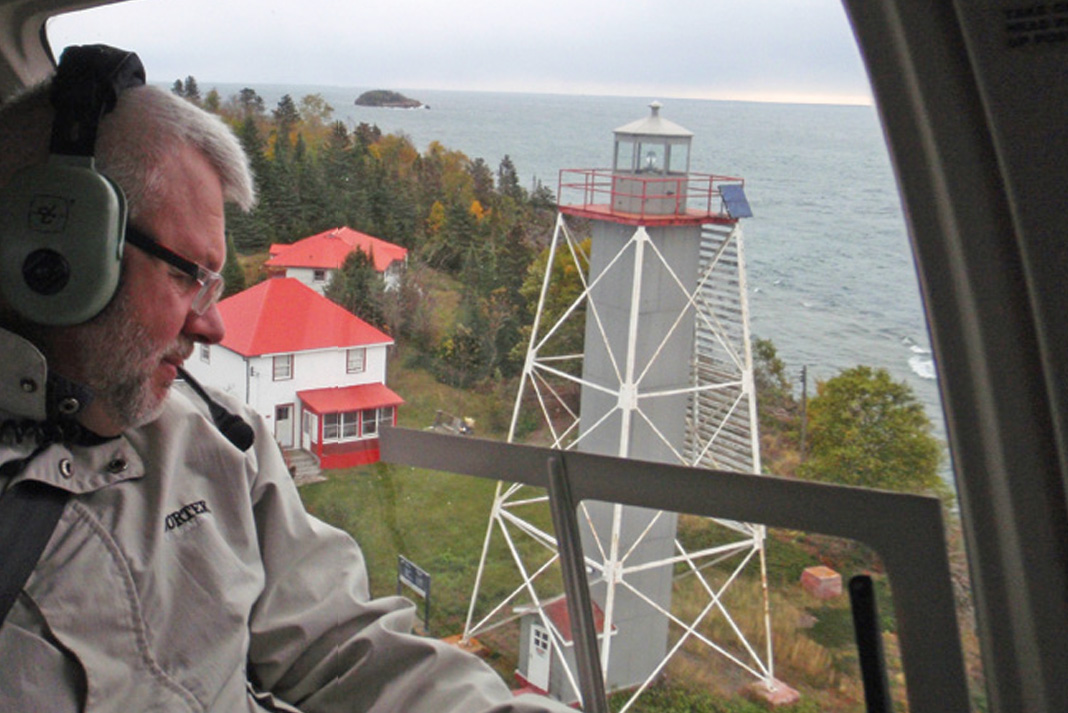
Amongst last-generation lightkeepers, the Brysons weren’t alone in their Peter Pan-like quest to stay in Neverland. Further west, in the group of islands offshore from the village of Rossport, Bert Saasto continued a lightkeeper’s life after the Coast Guard terminated his contract on Battle Island in 1991. For years, the diminutive Saasto—invariably clad in paint-stained dungarees—welcomed sea kayakers as a break from his self-imposed task of slapping red and white paint on structures around the property. Strolling across a golf green lawn from his immaculate farmhouse, a yellow lab at his heels, Saasto was at first taciturn, but quickly warmed up to visitors.
“The waves coming from the southwest were 50 feet high,” was Saasto’s familiar refrain, describing a wicked storm in 1977, his first year on the job. “When they hit the rocks, the spray shattered the glass in the lantern”—which stands 120 feet above the water.
More colorful still was Thunder Bay resident Maureen Robertson, who was compelled to rent lights at Porphyry Island and Trowbridge Island for 17 summers, despite declaring, “I never had a romantic interest in lighthouses.” On vacation from her job at a health clinic, Robertson made annual solo retreats to northern Ontario lakes, hiring a floatplane to access remote fishing and hunting camps. On one such vacation in 1993, the pilot took the scenic route home, buzzing the red and white keepers’ residences on Porphyry. “When I saw the lighthouse I thought, ‘Oh my gosh, would I ever love to have that,’” says Robertson. “It was like something out of Hansel and Gretel.”
Robertson sweet-talked the Coast Guard into giving her the keys to a place that lacked electricity, running water and indoor plumbing. “At first they said I could never live out there alone,” she says. “They said, ‘What’s an old woman like you going to do out at a lighthouse?’ Well, what’s so dangerous about an island with a nice house on it?”
She spent four years at Porphyry before moving to tiny, rockbound Trowbridge. There, she decorated each room of the lightkeepers’ two-story duplex with unique themes, including a recreated post office and a fur- and snowshoe-decked bedroom dedicated to the Royal Canadian Mounted Police. Nearly every room in the house had an old rotary telephone, despite a lack of phone service. All of her furniture and decorations were purchased at yard sales and thrift shops and hauled to the island by helicopter.
“If people are going to think I’m eccentric,” she says, “then I’m going to live up to it.”
Robertson was 76 years old when she left Trowbridge for good in 2010, the year the Coast Guard divested nearly a thousand lights. I felt fortunate to have encountered a woman whose simple lifestyle was likely analogous to my great-great grandfather C.J. Pim’s. Then, a few years later, I learned about a group of Lake Superior enthusiasts working just as hard to keep the lightkeeper spirit alive.
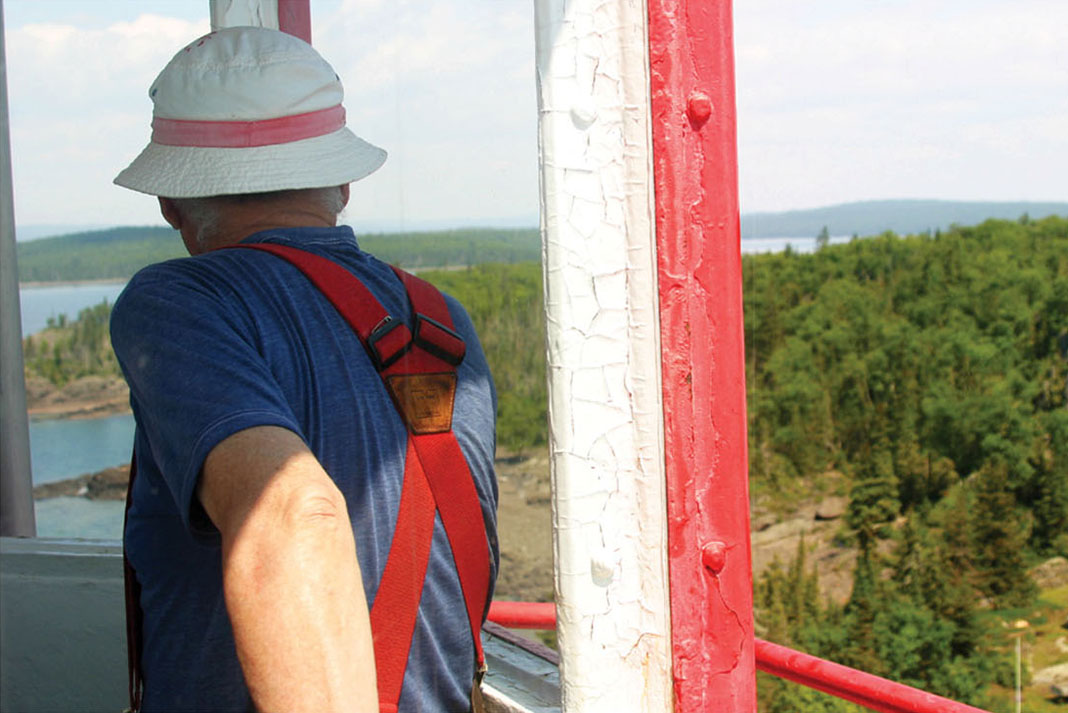
Protecting Lake Superior’s heritage
Darrell Makin fell in love with lighthouses 20 years ago, when he kayaked from the Sibley Peninsula across the gaping mouth of Black Bay and landed in a grassy cove on the west side of Porphyry Island. After hiking a kilometer from the landing to the lighthouse grounds on the island’s tip, Makin had his first introduction to Maureen Robertson—two 1950s-vintage automobiles, sporting fresh pink and purple paint. The Coast Guard had issued the cars to the lightkeepers, ostensibly to make it easier for them to get around. Now, they were central to Robertson’s landscaping.
“The place was in great shape,” recalls Makin, an outdoor educator and author of a guidebook to paddling the Lake Superior National Marine Conservation Area. “Maureen made people welcome out there. It was an eye-opening encounter with a part of maritime history.”
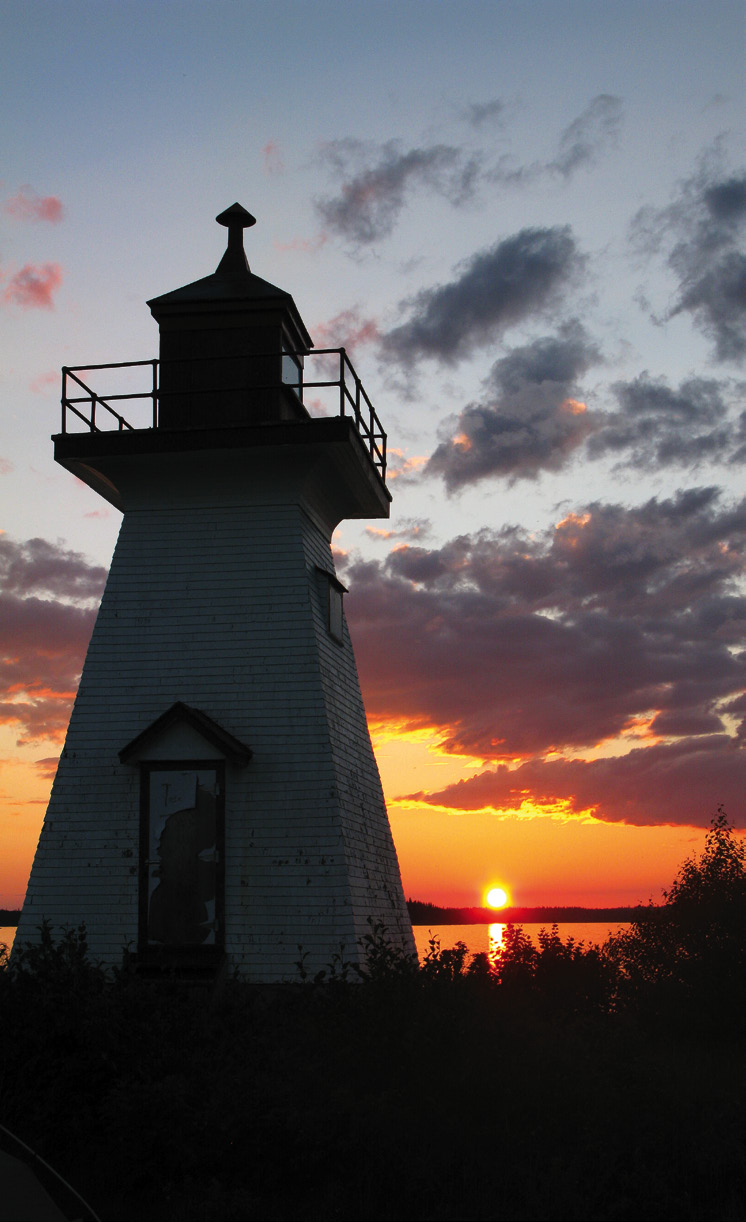
After Robertson moved to Trowbridge, Makin witnessed the slow demise of the Porphyry Island lighthouse with sadness. Unkempt grasses overtook the grounds and vandals damaged both the main keeper’s two-story house and assistant keeper’s bungalow. “As a kayaker, I felt I had an additional responsibility to protect Lake Superior’s heritage,” says Makin. “Lighthouses are icons.”
The silver lining of the Coast Guard divestment is the Heritage Lighthouses Protection Act, which enables citizens like Makin and a handful of like-minded cottagers from the Thunder Bay area—who collectively formed a non-profit known as the Canadian Lighthouses of Lake Superior (CLLS)—to acquire lighthouse properties from the government. The organization received ownership of Porphyry and Island Number 10, a tiny outpost midway along the paddling route from Sibley to Rossport. In 2014, hundreds of volunteer hours were committed to drywalling, painting, replacing windows and tending the grounds at Porphyry, and sprucing up the light tower and installing a pit privy at Island Number 10, a popular campsite.
The overall goal, says Makin, is to keep Lake Superior lighthouses accessible to the public. Similar grassroots initiatives on the Great Lakes have saved lighthouses on Manitoulin Island and at Lake Erie’s Point Dover. This year, Makin anticipates operating Porphyry’s two-story residence as a bed-and-breakfast, with administration space and possibly hostel-style accommodations in the assistant keeper’s house. Meantime, the organization is pitching similar plans to the government for other lighthouses along the Sibley to Rossport corridor—ultimately creating a “lighthouse trail” for sea kayakers.
A kinship with the past
The original lightkeepers would, I think, approve of the resourceful characters who have stepped in as stewards for their lights. Relicts of an increasingly distant era, the lake’s historic sentinels may well have succumbed to senescence were it not for the efforts of these mariners, misfits, enthusiasts and adventurers—a motley band whose members I count myself among.
That evening at Caribou Island, I consider how sea kayak wanderlust is my own connection to C.J. Pim and the lightkeeper tribe. A 1914 obituary to my progenitor reveals the parallels between his life and mine: Pim “was very familiar with the coast for many miles on either side of the Sault,” reported the Sault Star. “Michipicoten Island, Gargantua, Dog River and other spots along the shore of Lake Superior saw him frequently.” These are some of my favorite haunts a century later.
As the sun pulses on the horizon, the feeling of timelessness sparks a kinship with my great-great grandfather. The gulls become silent and the lake laps rhythmically on the gravel shore; the beacon stirs to life, casting its first beams into the twilight; and somewhere in the distance, the sound of a freighter’s engine drones across the water.
Plan your Lake Superior lighthouse tour
The Slate Islands were designated an Ontario provincial park in 1985, recognizing the archipelago’s unique geology, rare Arctic plants and woodland caribou. Though protected, it’s free to visit and registration isn’t required for overnight stays. The islands are the perfect destination for a base camp sea kayak trip. When the wind is blowing, stay inside the harbor and check out the abandoned mine shaft in Copper Harbour, troll for lake trout off of McColl Island and explore the century-old logging camp in Lawrence Bay, a caribou hotspot. In calm conditions, circumnavigate Patterson Island, visiting the lightstation, camping at Horace Cove and keeping your eyes peeled for shattercones—flaky, fractured rock formations created by meteorite impact.
The Slates mark the eastern boundary of the Lake Superior National Marine Conservation Area, the world’s first freshwater preserve, which stretches over 150 kilometers west to the mouth of Thunder Bay. Porphyry Island and tiny Island No. 10 are just two of the hundreds of isles in this sprawling archipelago. Contact the Canadian Lighthouses of Lake Superior on Facebook to learn more about the area’s paddling opportunities and staying at the restored lightkeeper’s residence on Porphyry.
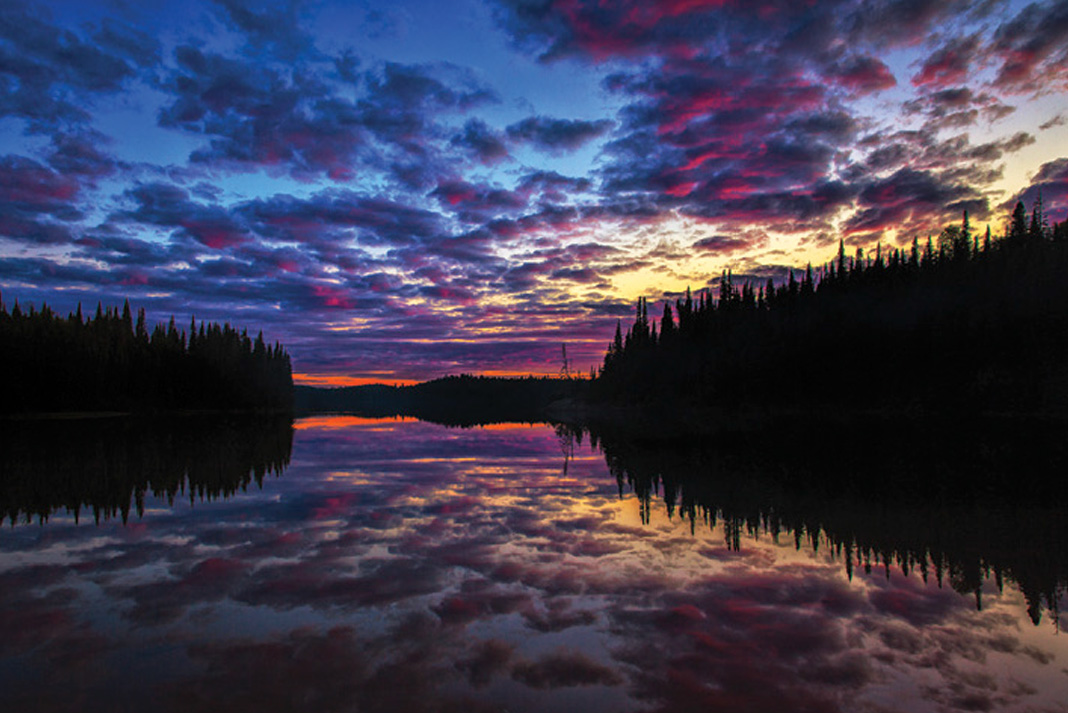
Best season
Cold water, strong winds and fog are Lake Superior staples. Mid-summer offers the best chance of fair, sunny weather and moderate winds.
Access
The crossing to the Slate Islands is long and exposed to the brunt of Lake Superior’s wind and waves; paddlers without open water experience should contact Bluebird Charters for a boat shuttle. Journeying in the Lake Superior National Marine Conservation Area requires numerous open water crossings—including the seven-kilometer vault from the Sibley Peninsula to Porphyry Island—and is recommended for experienced paddlers only.
Go guided
Battle Island lighthouse looks out over the misty waters of Lake Superior. | Feature photo: Susan Miller/Wikimedia Commons


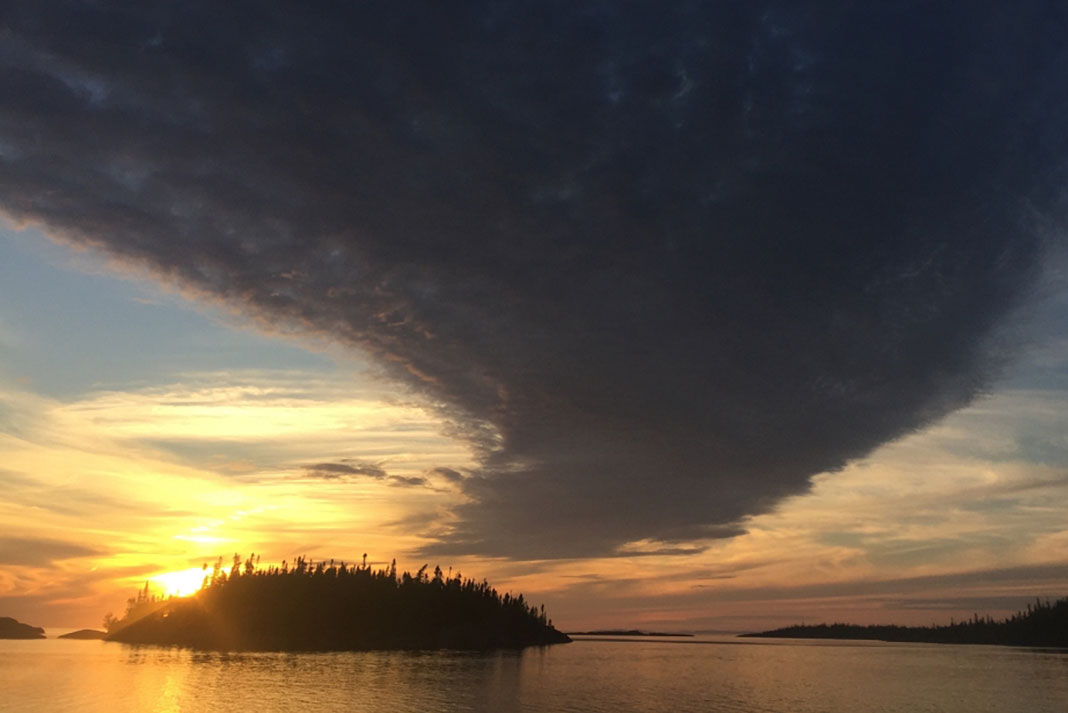
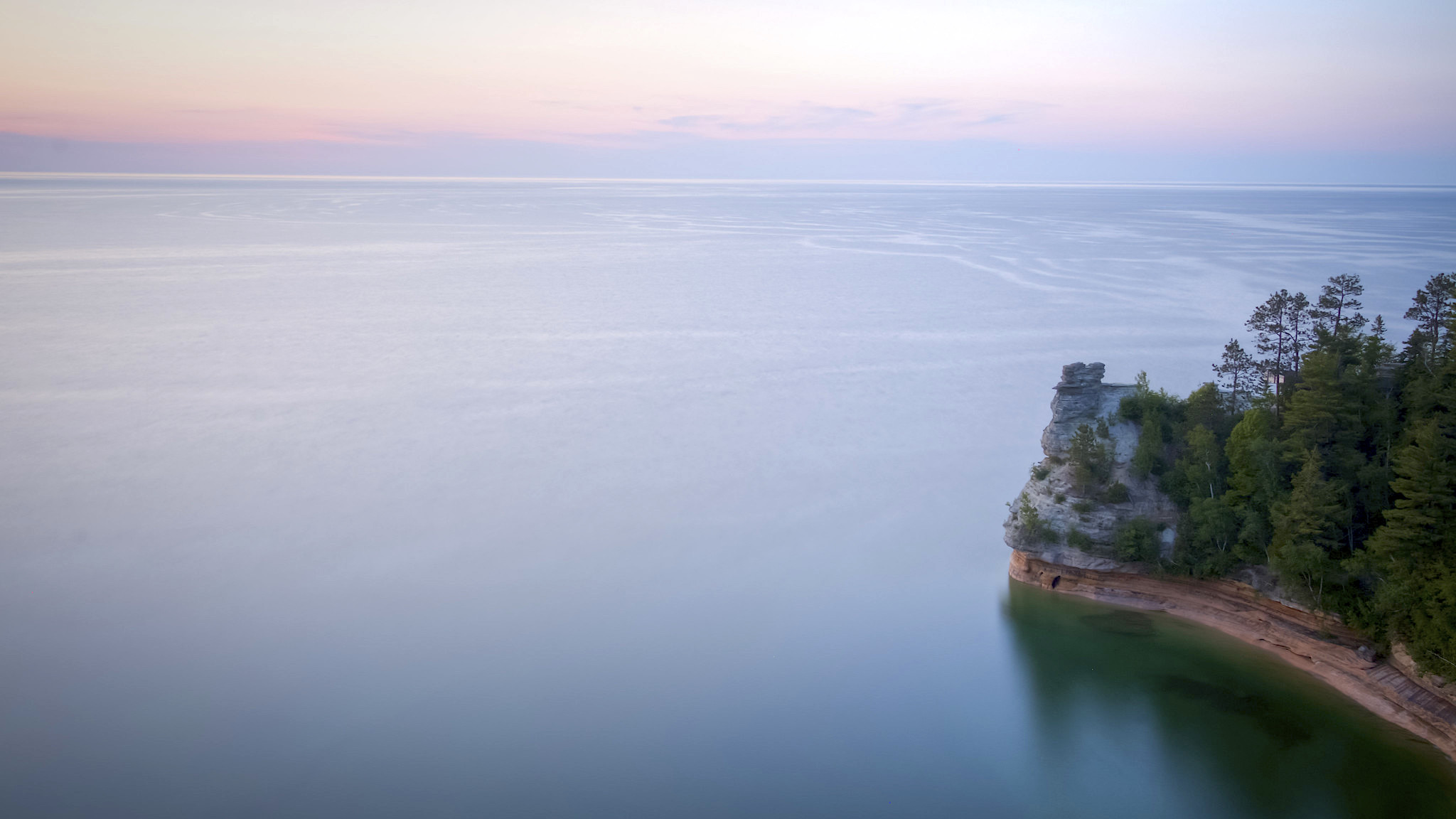
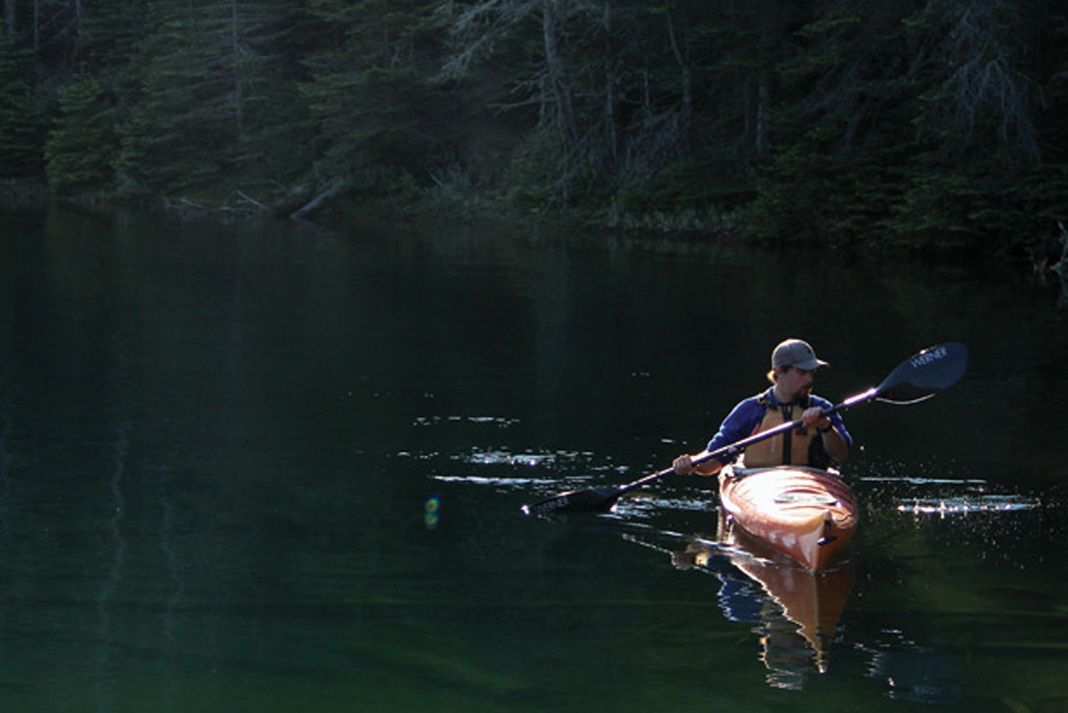
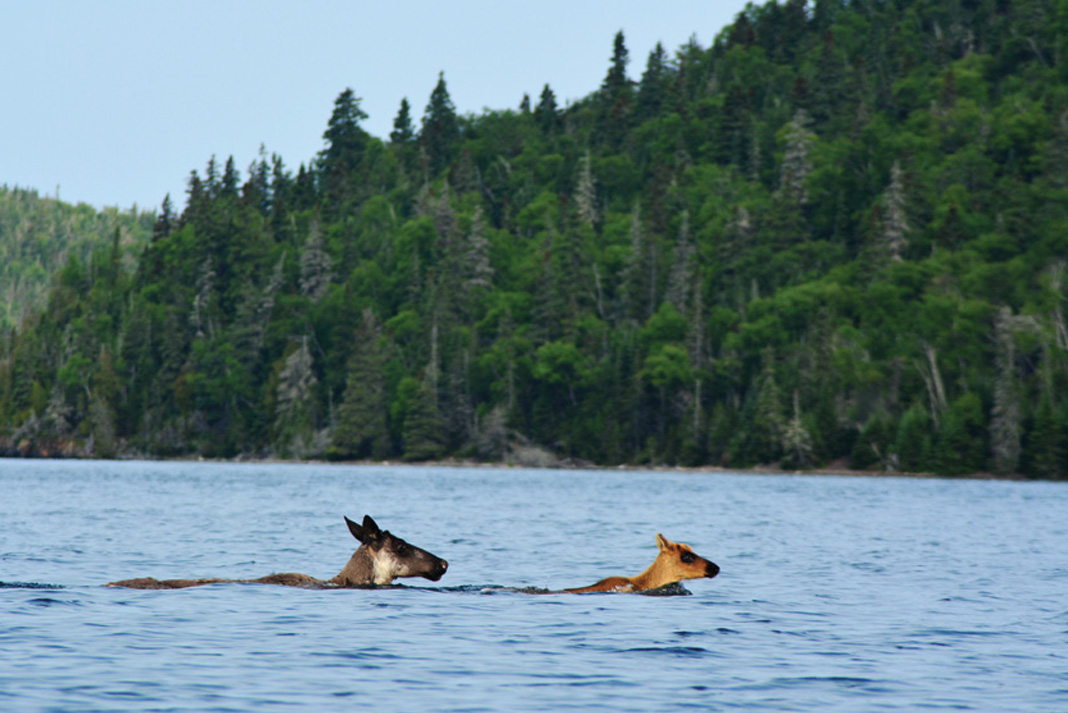
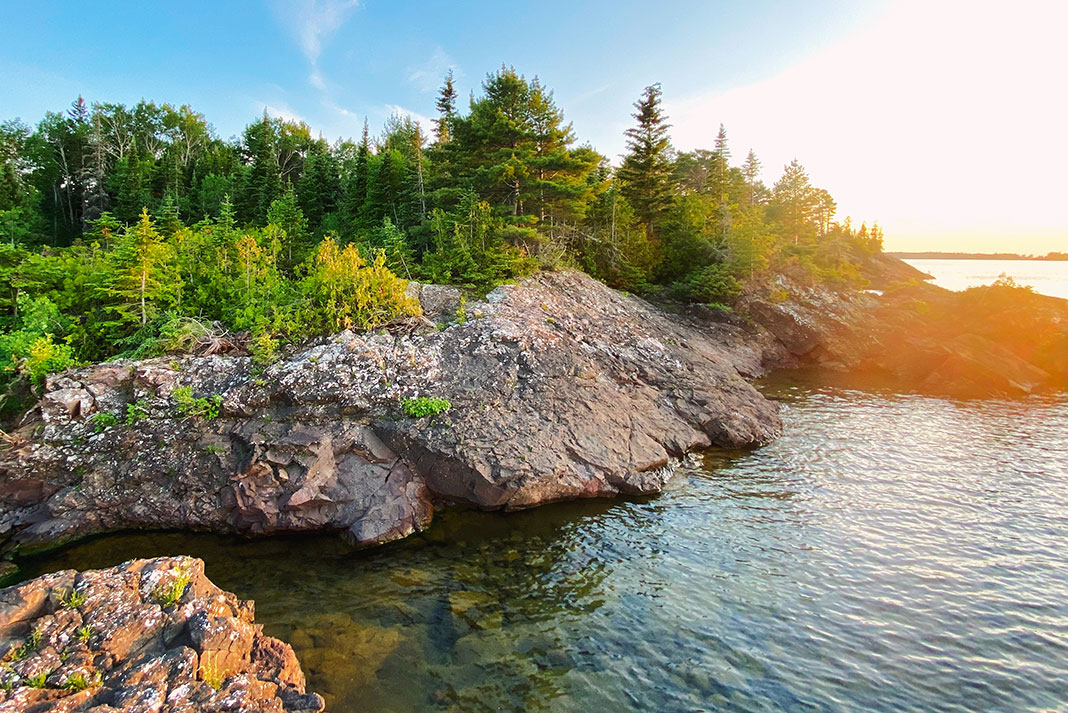

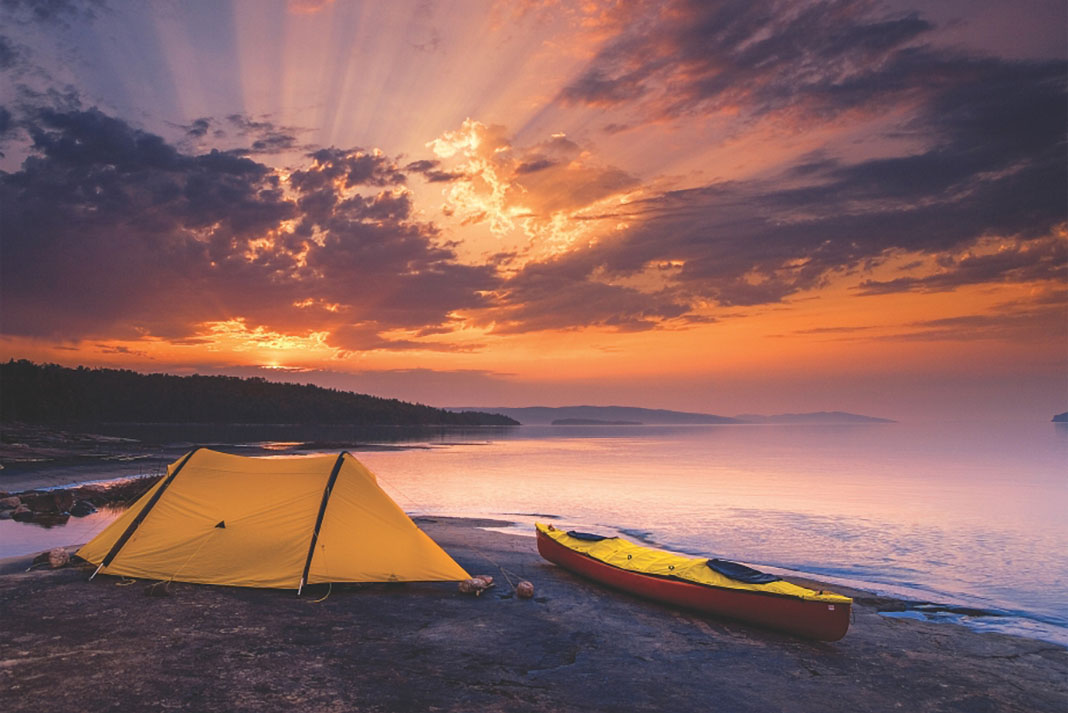
 This article was first published in the Spring 2015 issue of Adventure Kayak Magazine.
This article was first published in the Spring 2015 issue of Adventure Kayak Magazine. 